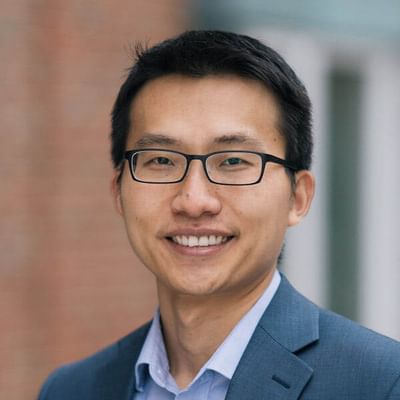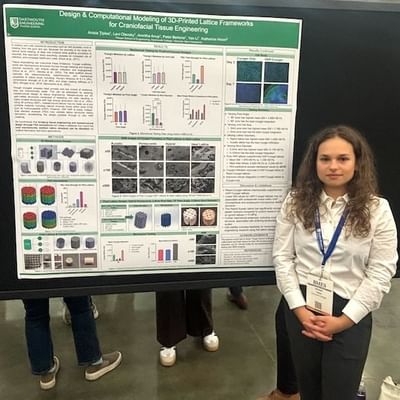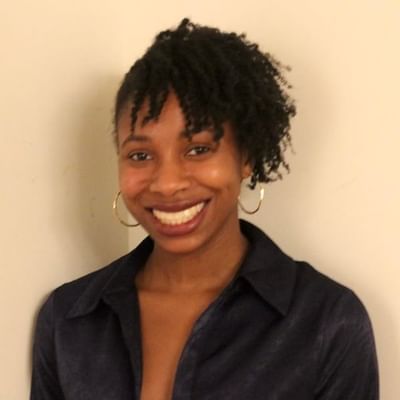- Undergraduate
Bachelor's Degrees
Bachelor of ArtsBachelor of EngineeringDual-Degree ProgramUndergraduate AdmissionsUndergraduate Experience
- Graduate
Graduate Experience
- Research
- Entrepreneurship
- Community
- About
-
Search
Research Quick Takes

Jan 16, 2025
Cryosphere Early Career Award
Professor Yoshihiro Nakayama received the Cryosphere Early Career Award last month at the American Geophysical Union (AGU) meeting, for his work on polar oceanography and Antarctic processes. "I am deeply honored to receive this award. My work integrating observations and modeling is made possible through the extensive support and collaboration of researchers worldwide. I'm grateful for their invaluable contributions."

Dec 19, 2024
NIH Grant Supports New Tools for Neuroscience
Professor Hui Fang's research group was awarded $2.6M over five years from NIH to develop and optimize a new type of microelectrode array probe used for parallel neuromodulator sensing and electrophysiological recording. "Refining and validating this type of probe would directly enable numerous studies in both basic and translational neuroscience, would be applicable to many other devices, such as DBS and sEEG electrodes, and would also bring the technology a significant step closer to commercial manufacturing," said Fang.
Nov 14, 2024
Silicon for the Quantum Defect Era
Research associates Yihuang Xiong and Jiongzhi Zheng, PhD student Shay McBride, and Professor Geoffroy Hautier are co-authors of "Computationally Driven Discovery of T Center-like Quantum Defects in Silicon" published in Journal of the American Chemical Society. "Finding new 'quantum defects' facilitates bringing quantum technologies to real world scalable technologies." says Hautier. Adds Xiong, "Our study identifies several silicon defects that were overlooked before the quantum defect era and proposes high-yield synthesis routes."

Nov 14, 2024
On the Future of Flexible Electronics
Professor Will Scheideler authored "Nimble native oxides: Printing circuits from the skin of liquid metal," published in Matter, which focuses on new two-dimensional metal oxides that are thin, transparent, and flexible. "This preview highlights the opportunities for new applications of flexible and printed electronics and discusses a few of the most important challenges for this emerging research field," says Scheideler.

Nov 08, 2024
BMES Annual Meeting
At the 2024 Biomedical Engineering Society (BMES) Annual Meeting in Baltimore, MS student Anisia Tiplea '24 presented her senior honors thesis, and Hixon Lab gave an invited talk on their bone regeneration work supported by the Dartmouth Innovations Accelerator for Cancer.

Oct 31, 2024
INFORMS MIF Best Paper Award
Professor Wesley Marrero received the INFORMS MIF Best Paper Award as co-author of, "Interpretable Policies and the Price of Interpretability in Hypertension Treatment Planning" published in Manufacturing & Service Operations Management. The paper uses optimization to design clinically intuitive hypertension treatment protocols that greatly outperform clinical guidelines.

Oct 24, 2024
Research Webinar Award
PhD student Prabhat Hegde received an Honorable Mention award at the inaugural INFORMS Minority Issues Forum (MIF) Summer Webinar Competition. Judges said Hegde's 5–10 minute research webinar, titled Rural school bus routing and scheduling with endogenous demand and traffic congestion, "demonstrated great skill and creativity." Hegde accepted the award at the INFORMS Annual Meeting in Seattle.

Oct 17, 2024
3D Metastructure for Better Energy Harvesting
PhD students Huan Zhao and Xiangbei Liu, and Professor Yan Li co-authored "Architecture Design of High-Performance Piezoelectric Energy Harvester with 3D Metastructure Substrate" featured on the cover of Advanced Theory and Simulations. "We achieved a remarkable 13.26-fold improvement in PEH performance by replacing the traditional solid substrate with a 3D auxetic unit-cell metastructure," says Li.

Oct 17, 2024
Oxygen Evolution Reaction
Professor Geoffroy Hautier is one of six co-authors of a perspective published in Nature Energy about the path to more efficient production of sustainable fuels. The researchers describe a way to map out the oxygen evolution reaction that's critical for sustainable, decarbonized fuels such as hydrogen.

Oct 10, 2024
Nanoparticle-Based Biosensors
PhD candidate Gabby Moss and Professor Sol Diamond co-authored "Effects of Salt Concentration on a Magnetic Nanoparticle-Based Aggregation Assay with a Tunable Dynamic Range," published in Sensors. The team experimentally demonstrated the effects of salt concentration on magnetic nanoparticle (MNP) biosensing efficacy and mathematically modeled MNP stability in solutions with different salt concentrations. "Our work can be leveraged to design an in vivo nanoparticle-based biosensor with enhanced efficacy in the event of varying salt concentrations," says Moss.

Oct 03, 2024
NIH Cancer Imaging Award
Professors Geoffrey Luke and Kim Samkoe were awarded a $2.2 million four-year grant from the National Institutes of Health (NIH). "The project is focused on combining ultrasound imaging with tumor-targeted nanodroplets to detect the presence of oral cancer in lymph nodes," says Luke. The research could lead to better diagnosis and fewer surgeries.

Sep 26, 2024
INFORMS AAS Best Paper Award
Professor Vikrant Vaze received the INFORMS AAS Best Paper Award as co-author of, "Vertiport Planning for Urban Aerial Mobility: An Adaptive Discretization Approach" published in Manufacturing & Service Operations Management. The paper optimizes the number, locations, and capacities of vertiports for electric vertical-takeoff-and-landing (eVTOL) vehicles in urban aerial mobility (UAM) systems while capturing interdependencies between vertiport deployment, tactical operations, and passenger demand.
